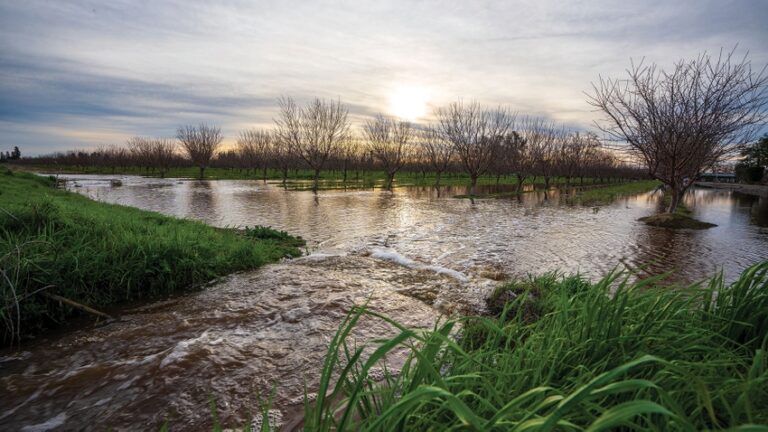A dormant almond orchard in California is flooded for groundwater recharge. Christine Gemperle/Almond Board of California
Call it super drainage, deep percolation, or simply groundwater recharge. It’s a simple hydrologic process where water at ground level moves downward from surface water to groundwater — the primary method through which water enters an aquifer.
“Farmers have considered it a sort of side benefit growing crops via flood irrigation with a recharge of the aquifer by not pumping groundwater,” said Jesse Roseman, Almond Board of California principal analyst for environmental and regulatory affairs.
“That part of recharging isn’t new,” Roseman said. “What is more current is the idea of over-applying water for the purpose of recharge in working land where crops are being grown and that has come about out of necessity with the Sustainable Groundwater Management Act limiting pumping.”
It is Roseman’s contention that, “It’s become more critical to do so wherever we can take surface water and overlay is safely in tree nut orchards or recharge basins so that we can comply with SGMA and limit the amount of ground that’s going to have to come out of production because of cutbacks on groundwater pumping.”
Especially in California agriculture, impacted by its variable climate and a perennial oscillation between drought and flood events with the knowledge that climate change will only exacerbate this variability. “Water managers are eying a way to capitalize on the extremes by harnessing […]
Full article: www.farmprogress.com

